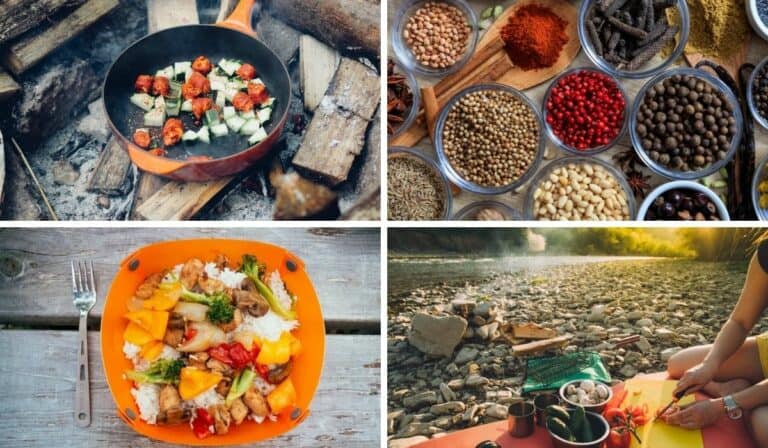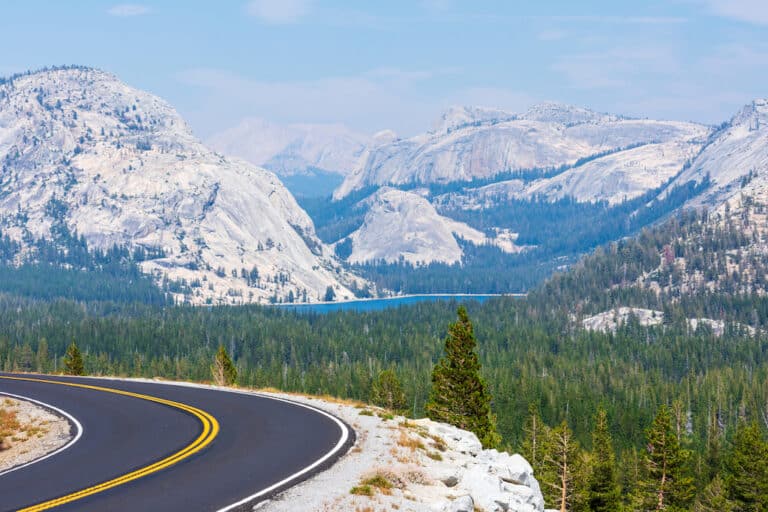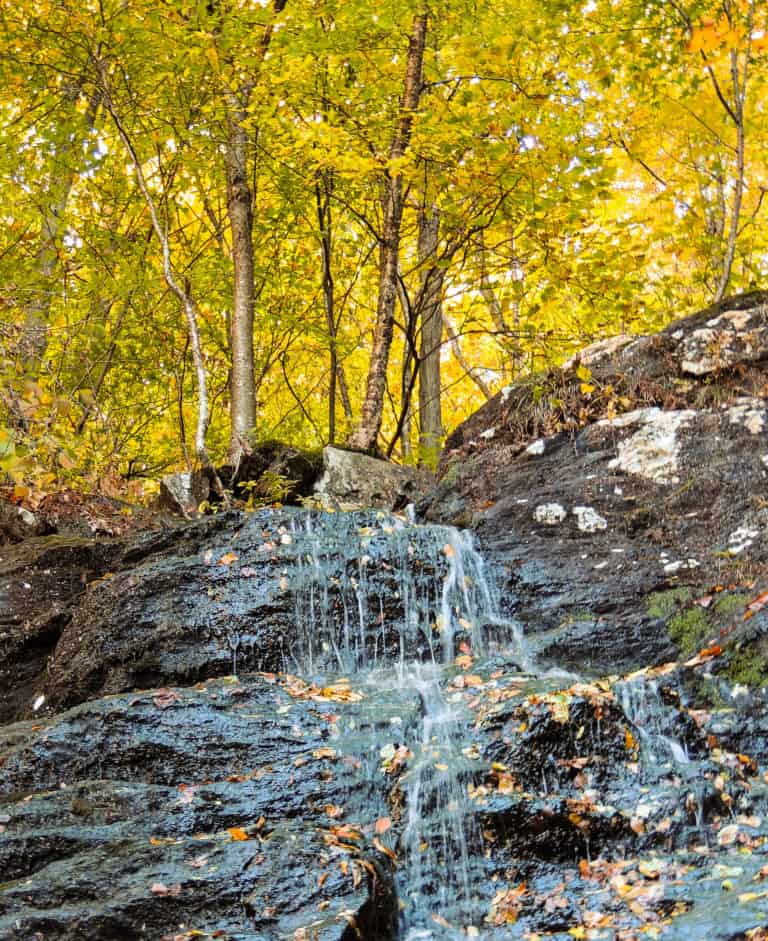Intro to Spring Foraging: 8 Edible Plants that are Easy to Identify and Delicious to Eat
Note: Advertising is how we keep this site free for you to enjoy, and we earn a commission from affiliate links that may be included in this post. Thank you for supporting Back Road Ramblers!
Here in the Northeast United States, our snow is finally melting away, the maple sap is finishing up its spring run, and the sunlight is casting a beautiful glow well into the evening.

All of this is a delightful reminder that the earth is waking up, and soon, we’ll be spending a lot more time outside.
Spring is also a great season to do a little foraging for wild edibles to liven up your campfire meals or meals at home.
Our kids have always loved foraging for food on our hikes through the woods, and over the years, we’ve learned a lot about safe foraging and what tastes good.
I’ll be the first to admit that we’ve had some culinary disasters after foraging for edible wild plants, but I won’t share those with you.
Instead, I’d like to share some of our favorite wild edibles for spring foraging and how to prepare them as part of a tasty campfire meal.
The edible wild plants mentioned in the post are great for beginners because they are commonly found in wild places, and they are easy to identify, harvest, and prepare.
While the danger of harvesting poisonous plants is real, I feel that the dangers are overemphasized and the benefits overlooked. Having said that, I must also say that it is essential to be absolutely sure of what you are harvesting and eating when foraging for your own food.
Wild Greens for Spring Foraging
When the days get longer and warmer, I crave green veggies in a big way.
The following wild greens are delicious raw in salads or sandwiches, and most can be added to soups, sauces, and other cooked meals for added health benefits.
Dandelion greens – The original spring tonic, these bitter greens are best picked young, which means early spring in the Northeast. Our favorite way to eat dandelion greens is in a mixed wild green salad, but we also enjoy them sauteed with extra garlic.
This recipe for pan-fried dandelion greens with tomatoes is our favorite. Dandelion leaves are incredibly easy to find and identify, and they are best harvested young to keep the bitterness at bay.
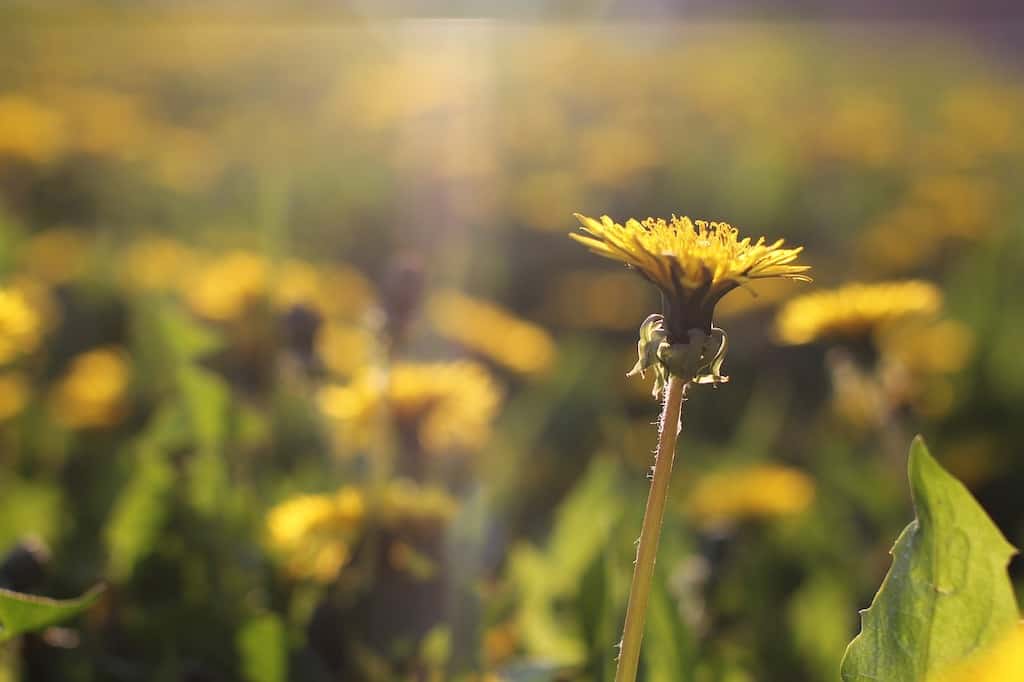
Watercress – A fancy staple for high tea, watercress is abundant in marshy streams and other bodies of water throughout the United States.
Watercress is a member of the mustard family and is widely cultivated for its lovely, mildly sharp flavor. When foraging for watercress, look for a floating plant with three to five oval-shaped leaflets.
In the spring, watercress displays clusters of white, four-petaled flowers. It is delicious raw in salads and on sandwiches.

Stinging nettles – Our kids called nettles “Cat Scratch” when they were little, and you do have to be careful when harvesting them. If nettles come in contact with your skin, you’ll have red, itchy welts for a few minutes afterward. When harvesting nettles in the wild, wear long sleeves and gloves for protection.
Nettles are best harvested in early spring when the stalks are less than a foot tall. Eventually, they will grow to more than five feet tall, and at that point, you should only harvest the tender tips.
Store nettles in a bag to keep them from stinging you. When you get home, cook them with a few tablespoons of water and a little salt — they will no longer be able to sting you.
Our favorite recipe is this tasty omelet from Nourished Kitchen.
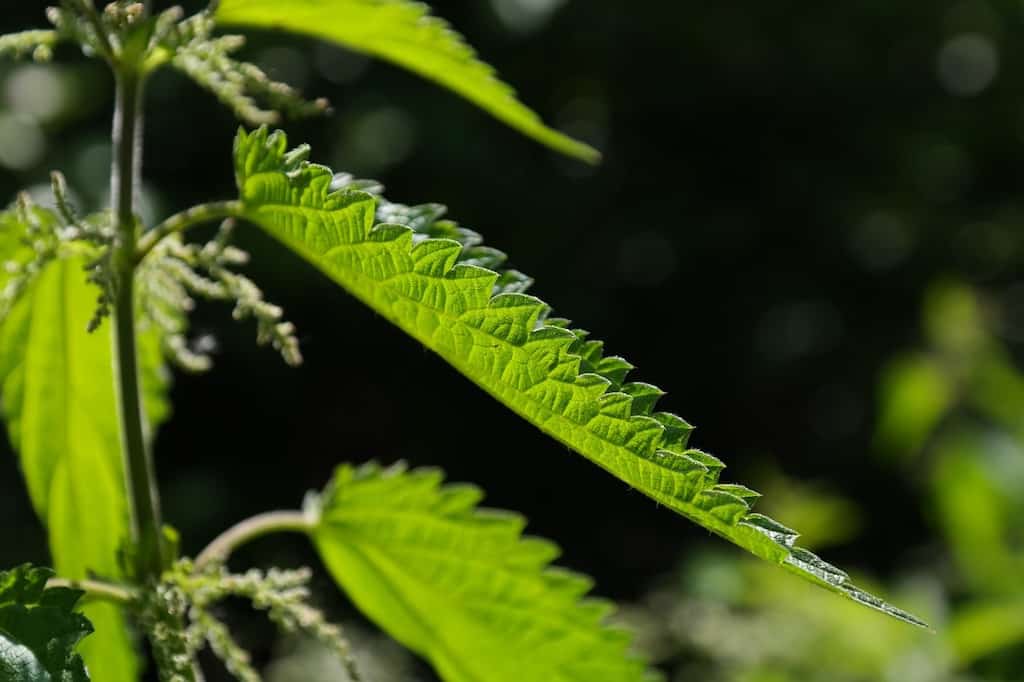
Violet leaves and flowers – Violets are among the first sweet treats to pop up in the spring.
They grow in the temperate parts of the northern hemisphere and are easy to spot in grassy areas or woodlands. Violet flowers come in purple, white, yellow, and pink and are tasty mixed with other greens in a salad.
The leaves are heart-shaped, with a peppery flavor, and best eaten raw. They’re a bit mucilaginous (slimy) and may be an acquired taste for some (me).
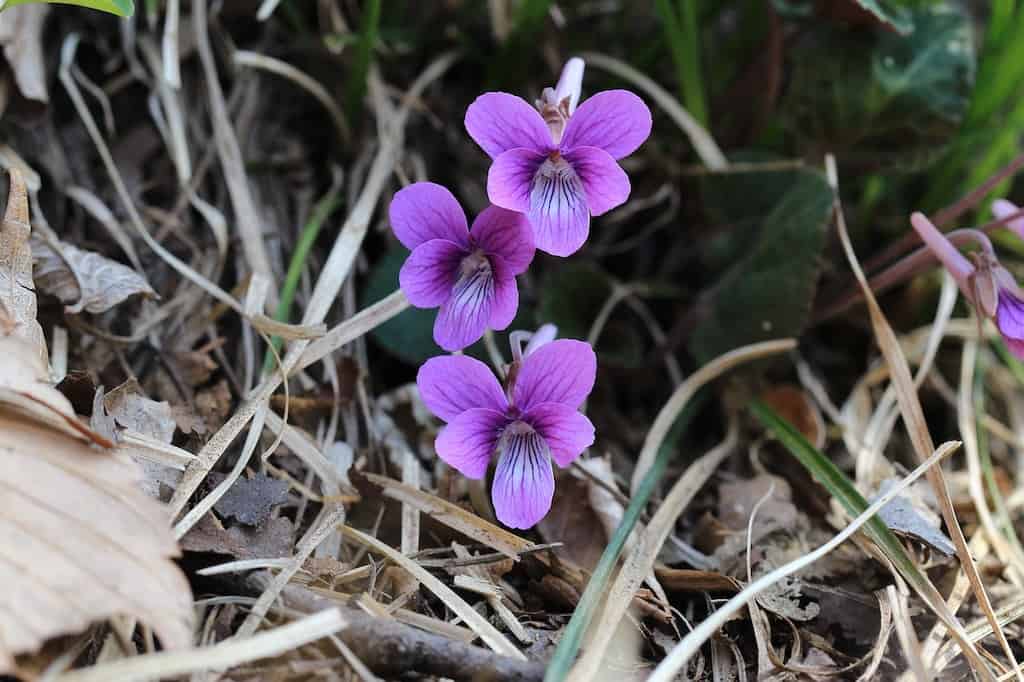
Garlic mustard – This prolific plant is wreaking havoc across much of the country.
It’s an invasive species that grows so dense in woodland areas that other plants aren’t able to grow there. Harvesting and eating garlic mustard will only put a dent in the population if you pull out the whole plant (root and all) before the flowers go to seed.
Luckily, garlic mustard is super delicious. Eat it raw, in soups, or make garlic mustard pesto.
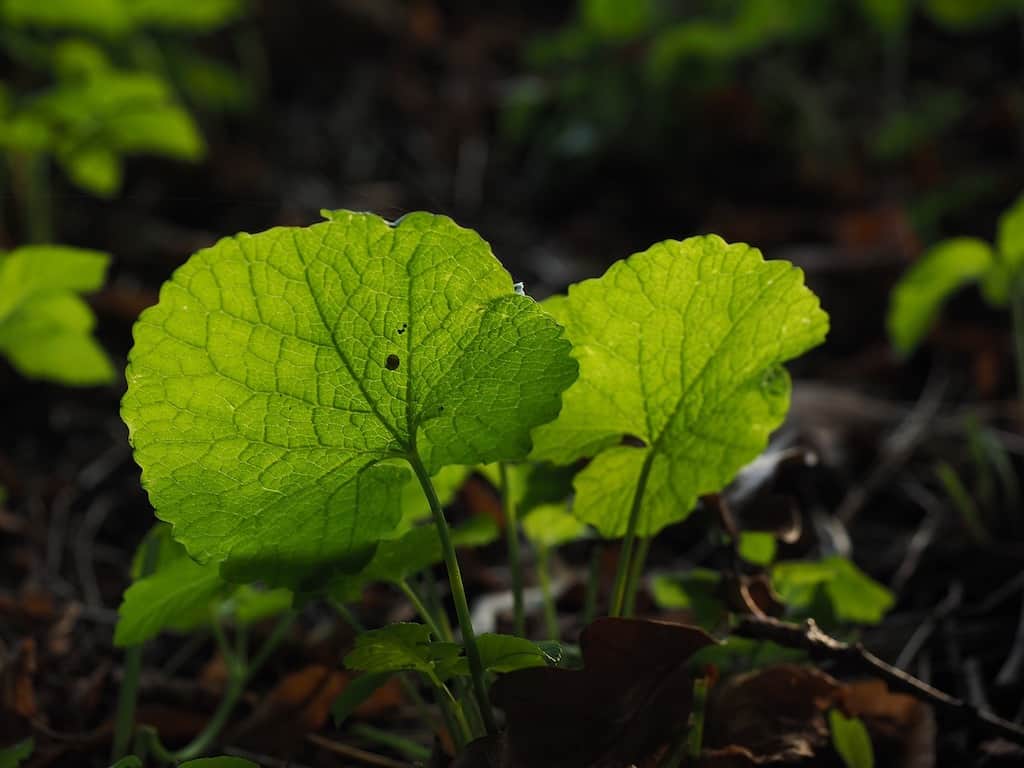
Read Next: Why Spring is the Best Time to Go Camping
More Wild Edibles To Harvest in the Spring
Now that you’ve got your salad fixings, here are a few more woodland delicacies you can harvest in the spring.
The next three wild edibles are like the fine wines of the forest — sought-after delicacies that have very definite seasons. The best way to find them is to ask locally about harvest seasons for spring foraging.
Spring Foraging for Fiddleheads
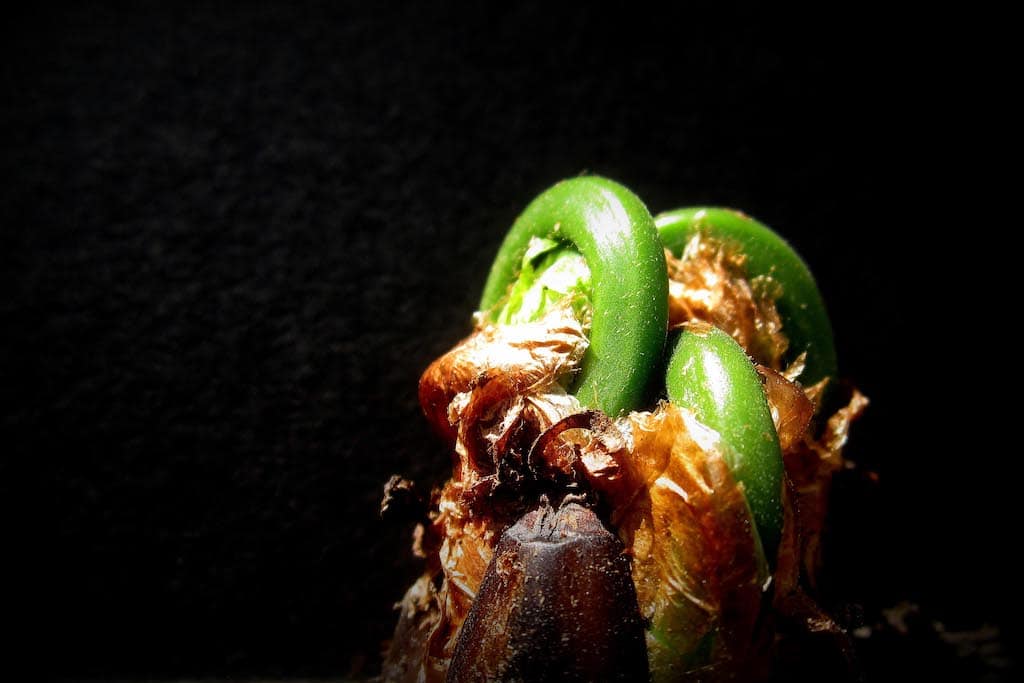
Fiddleheads are the unfurled fronds of the ostrich fern, and they’re only available for a couple of weeks in the spring. Once they start to leaf out, they’re no longer fit to eat, so timing is everything.
Spring foraging for fiddleheads is one of the best things about spring, and they are a gourmet treat when eaten as a spring camping meal.
If you’re wondering where to find fiddlehead ferns, you will likely have to do some exploring. Locals often keep their foraging spot a secret so they can keep all the tasty fiddleheads to themselves.
The best I can say is that fiddlehead ferns grow in moist, wild forests all over New England. In Vermont, they start breaking ground in early April.
You can’t eat all ferns, so positively identify the ostrich fiddlehead with your field guide. Ostrich fiddleheads are deep, bright green with a brown papery covering. One tell-tale sign that you’ve got an ostrich fern fiddlehead is the deep groove on the inside of the stem.
Cooking Fiddleheads
For the fresh, grassy flavor to shine, simple recipes work best.
Boil clean fiddleheads in salted water for five minutes. Drain them well, then saute them with butter or oil, some garlic, and some salt and pepper. Serve fiddleheads with your favorite camping meal – burgers, steaks, or hot dogs on a stick.
Spring Foraging for Ramps
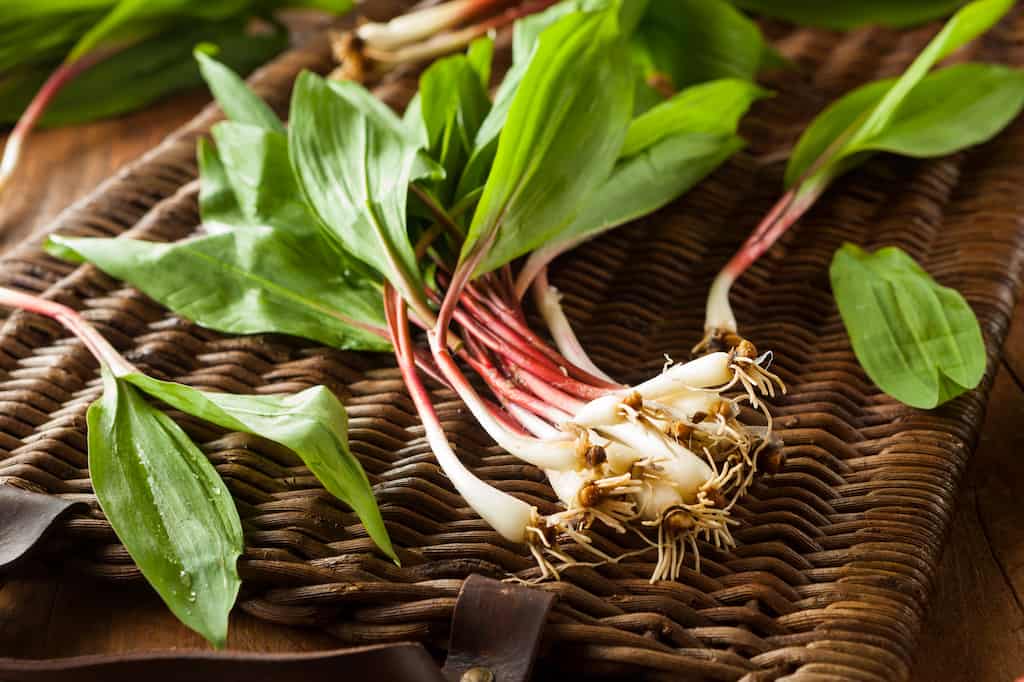
Ramps are a wild perennial native to northeastern North America. They’re also known as spring onions, wild leeks, or wild garlic.
The whole plant is edible – root, stem, and leaf, and they’ve got an incredibly delicate flavor reminiscent of their closest cousins. The harvest season for wild ramps lasts about a month, beginning in April or May, depending on where you live.
Where to Find Ramps
Like fiddleheads, the location of wild ramps is sometimes kept secret by those who love to harvest and eat them.
They grow in moist, fertile woodlands and are often the greenest plant on the spring forest floor. The leaves grow six inches tall and are quite broad, resembling lily-of-the-valleys. When left to grow undisturbed, ramps will grow a lush, expansive carpet.
Ramps take a long time to grow and repopulate, so it’s important to harvest them sparingly. Instead of digging up the bulbs, simply cut a few leaves from each plant with a pair of scissors.
The leaves have a delicate garlic flavor, and you really don’t need many to make a fantastic meal. Take only what you need and leave the rest to spread for next year’s harvest.
Cooking Wild Ramps
You can use ramps the same way you use onions.
Our favorite way to cook them is to grill them over our campfire and toss them with our foraged wild greens. They’re also really good on grilled pizza and hamburgers.
Outdoor Adventure Sampler has several great ramp recipes, including rampadillas, ramp pesto, ramp butter, and ramp aioli. So good!
Spring Foraging for Morel Mushrooms
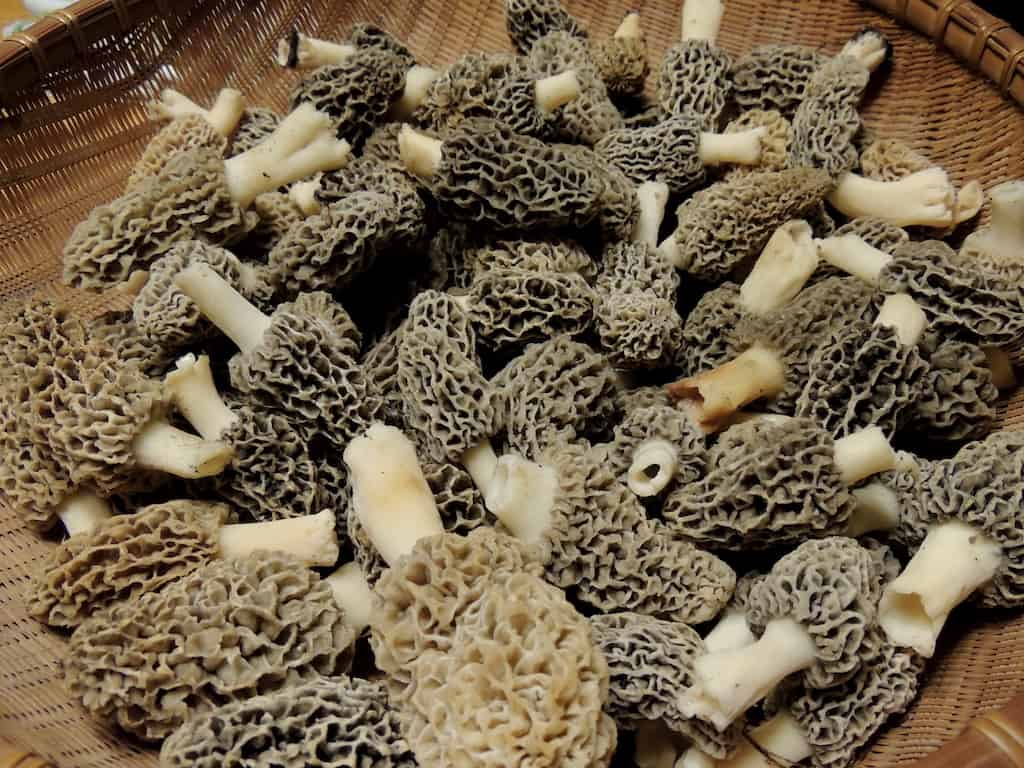
Morel mushroom hunting is one of our favorite pastimes come late April.
In Vermont, they say to start morel foraging when the oak leaves are the size of a mouse’s ear.
These delightful little mushrooms are tricky to find, and once you’ve found a patch of your own, you tend to keep it secret and return to it year after year.
Morel mushroom hunting is a passion for many foragers and a fun way to spend the day for others. We fall somewhere in between on that spectrum, spending between three and six hours each year foraging for morels.
No other mushroom looks quite like the morel, and they are very easy to identify (but very hard to spot on the ground). In Vermont, we start looking for them in early May.
Hunting for morels is a bit like searching for buried treasure, and the best way to find them is to forage with an experienced morel hunter. If you find one morel, there’s bound to be more nearby.
Where to Find Morel Mushrooms in the Spring
Well, that’s the million-dollar question, and if you do a quick Google search, you will find lots of advice. I’ve heard to look under leaf detritus in hardwood forests, and I’ve had really good luck finding morels in old apple orchards, as well as in cemeteries.
They are said to grow better in disturbed areas, and they do tend to grow in the same location year after year.
Cooking Morels
Morels are magnets for dirt and bugs, so before you cook them, slice them in half and soak them in cold, salted water.
Pat them dry and add them to a pan of hot oil to sear and brown them. Once they’re nice and brown, turn down the heat and add a chopped onion or wild ramps to the pan. Cook for five minutes and then add a pat of butter, a squirt of soy sauce, and a squeeze of lemon juice. Serve with rice and a big wild green salad.
I hope this post excites you for spring foraging, hiking, and camping. Time to shake off Old Man Winter and discover the bounty of the natural world.
Resources for Foraging for Food in the Wild
If you’re interested in foraging for wild edible plants, the first thing you need is a good field guide.
We’ve been using Edible Wild Plants: A North American Field Guide to Over 200 Natural Foods for years, and we usually keep it in the car so it’s always handy on road trips and other adventures where we’re likely to be foraging for food.
We also really love Healing Wise (Wise Woman Herbal) by Susan Weed, but it’s less of a field guide and more of a story about some of the fantastic wild plants that grow prolifically in our region (the Northeast).
Harvesting wild plants may seem scary or daunting when you first start, but once you are comfortable with a specific species, it will change the way you look at wild plants altogether.
Wild food is nature’s grocery store, and foraging for wild foods is an important skill for people who spend lots of time in the outdoors. You never know when your outdoor survival skills will come in handy.
Want to read more about preparing awesome camp food? Here are some posts to get you started:
- The 10 Easiest Camping Meals for Families on the Go
- Creating a Camping Spice Kit
- Your Amazing Car Camping Kitchen
- Easy Camping Recipe: Quinoa Patties
Follow us on social media for more outdoor inspiration!


Tara Schatz is a freelance writer and travel blogger with a passion for outdoor adventures. She is the co-author of AMC’s Best Day Hikes in Vermont and currently blogs at Back Road Ramblers and Vermont Explored, where she shares travel tips, adventure destinations, and vacation ideas for the wanderer in everyone.


